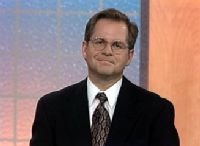

$74.00
The shoulder complex is one of the most intriguing and exciting research and clinical practice areas in orthopedic and sports physical medicine
Description
The shoulder complex is one of the most intriguing and exciting research and clinical practice areas in orthopedic and sports physical medicine. Increased interest in the shoulder has led to enlightened research, increased knowledge, improved awareness, and enhanced critical thinking regarding our recognition and treatment of shoulder disorders.
Course Details
| Instructor(s) | |
|---|---|
| Course Length | |
| Platform |
Details
Run Time: 4 hours
Attendee: Physical Therapists, PTA’s, Students, Athletic Trainers
Required Equipment: Personal Computer, Tablet, or Smartphone with access to Broadband Internet (<1.4 mbps)
Examination: Two (2) 20-question module Quizzes. Passing grade of 70% or higher on each required for certificate
Course Evaluation: Yes
Certificate of Completion: Yes
Workbook/Handout: Yes
Course Approvals/Certifications:
Outline
Module I
Unit 1: Rehab of the Shoulder – Introduction
Unit 2: Anatomic Structures of the Rotator Cuff
Unit 3: Rotator Cuff Function
Unit 4: Examination of a Patient
Unit 5: Review of the Diagnosis
Unit 6: The Classification and Treatment of Rotator Cuff Pathologies
Unit 7: Mini-Open Repair
Unit 8: Biomechanics of Impingement Syndrome
Unit 9: Addressing The Loss of Motion
Unit 10: Rehabilitation Following Rotator Cuff Repairs
Unit 11: Medium to Large Rotator Cuff Tear
Unit 12: Question and Answer Section – Part I
Module II
Unit 13: Secondary Tears
Unit 14: Second Example of a Secondary Tear
Unit 15: The Conclusion of the Rotator Cuff Discussion
Unit 16: The Role of Dynamic Stabilizers
Unit 17: Multidirectional Instabilities of the Shoulder
Unit 18: Significance Dysfunction from Everyday Activities
Unit 19: Conservative Treatment
Unit 20: Rehabilitation Following Capsular Shift Procedure
Unit 21: Question and Answer Section – Part II
Final Test
Certificate of Completion
Course Evaluation
Learning Goals
Upon completion of this class, you should be able to:
- Describe how a thorough understanding of anatomy relates to providing accurate and effective therapies
- Identify anatomical structures of the shoulder, hip, and pelvis
Behavioral Objectives
Topic 1
Module I – Units 1-12
Unit 4: Examination of a Patient
1. Explain 3 factors discussed that can impact self-assessment and the overall, potential outcome of the patient with a rotator cuff tear.
Unit 5: review of the Diagnosis
2. Explain 3 variables you need to consider when developing a post-operative RC rehabilitation program in both the non-athletic individual, and the young, overhead, throwing athlete.
Unit 6: The Classification and Treatment of Rotator Cuff Pathologies
3. Express 3 patient specific, potential, risk factors which may predispose a non-athletic individual to shoulder stiffness post RC surgery.
Unit 8: Biomechanics of Impingement Syndrome
4. Incorporate the 5 factors in the acute phase of impingement, into patient’s treatment plan.
Unit 9: Addressing The Loss of Motion
5. Identify 4 specific risk factors associated with developing stiffness in a patient following a rotator cuff repair.
Unit 10: Rehabilitation Following Rotator Cuff Repairs
6. Apply 3 manual treatment interventions in the immediate post-operative phase, Weeks 1-8 in the overhead, throwing athlete.
Unit 11: Medium to Large Rotator Cuff Tear
7. Recognize 3 clinical characteristics of the non-healing tear in a patient with rotator cuff disease.
Topic 2
Module II – Units 13-21
Unit 15: Conclusion of the Rotator Cuff Discussion
8. Describe 2 clinical observations associated with a dysfunctional arc in the non-athlete.
Unit 16: The Role of Dynamic Stabilizers in the Rotator
9. Relate 4 Dynamic Stabilizers in the Shoulder.
Unit 20: Rehabilitation Following Capsular Shift Procedure
10. Integrate 5 advanced strengthening phase exercises into treatment after rotator cuff repair.

